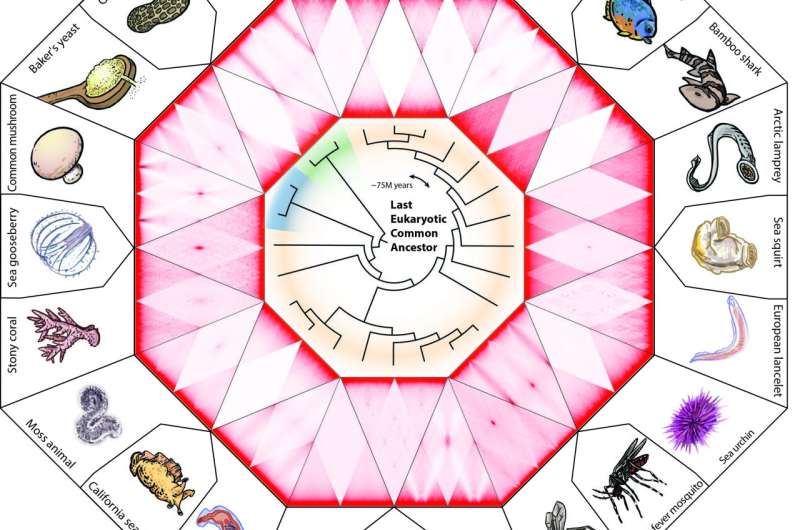Phys.org May 27, 2021
An international team researchers from many countries investigated genome folding across the eukaryotic tree of life. They found two types of 3D genome architectures at the chromosome scale. Each type appears and disappears repeatedly during eukaryotic evolution. The type of genome architecture that an organism exhibits correlates with the absence of condensin II subunits. Moreover, condensin II depletion converts the architecture of the human genome to a state resembling that seen in organisms such as fungi or mosquitoes. In this state, centromeres cluster together at nucleoli, and heterochromatin domains merge. They propose a physical model in which lengthwise compaction of chromosomes by condensin II during mitosis determines chromosome-scale genome architecture, with effects that are retained during the subsequent interphase. This mechanism likely has been conserved since the last common ancestor of all eukaryotes…read more. TECHNICAL ARTICLE

…This illustration shows the menagerie of chromosome contact patterns in the nuclei of various animals and plants. Credit: Adam Fotos, Olga Dudchenko, Benjamin Rowland and Erez Lieberman Aiden/Baylor College of Medicine